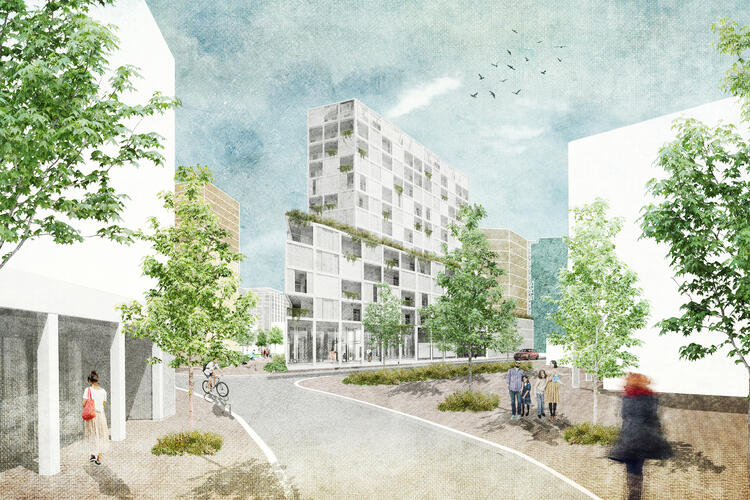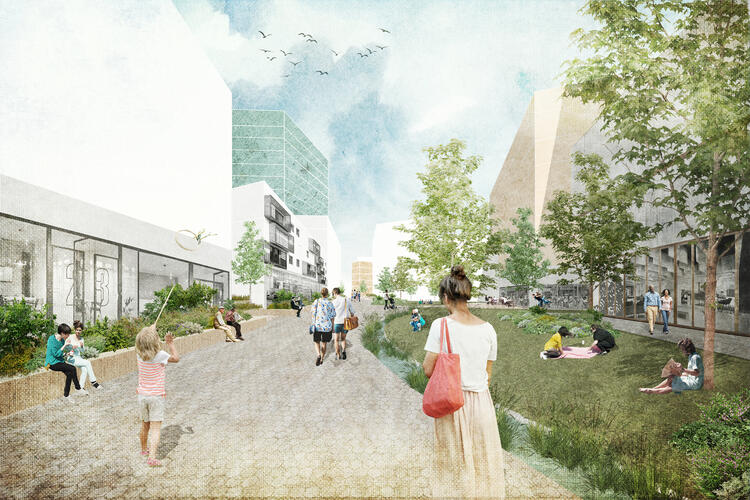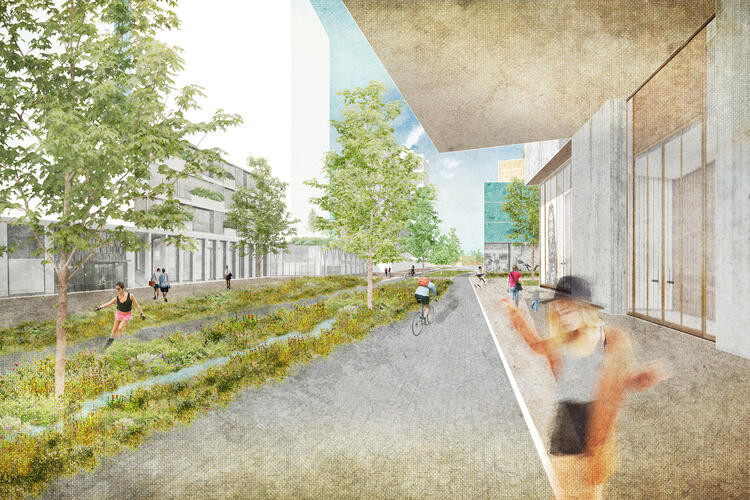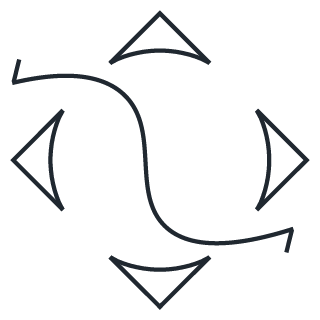Gently eliciting a modal shift
In the Dutch city of Enschede a large plot of land is poised for a radical overhaul. Its scale and strategic location represent an opportunity to make a real impact on the city’s functioning. In close collaboration with the municipal administration, POLO conceives an ambitious urban plan that ties together disparate neighbourhoods and plants the seeds for a city-wide modal shift.
Within a region of decreasing population, Enschede is seeing an influx of residents. In this context it is time to reconsider some historic planning decisions. The project site is an uncomfortable residue space, a reminder of the rash infrastructural developments that raged through Western European cities after World War II. It currently forms a confusing vestibule to the city, an unappealing appetiser to the attractive main course of the city centre. Yet it bears within it a once-in-a-generation chance to accelerate Enschede’s progress towards a more sustainable future, making an impact that ripples far beyond the site’s boundaries.
From infrastructural void to green city gate
The project area lies nestled between different districts with a specific urban morphology. To the west there is the City Campus (Stadscampus) with its model of freestanding buildings set in open green space; in other directions the terrain connects to the finer-grained urban tissue of the inner city with its mostly pedestrianised “Urban Floor” (Stadsvloer). The site caps the former Boulevard 1945, a now redundant east-west passage alongside the inner city. The outsized thoroughfare was cut and partially transformed into public space, making way for the development of a forward-looking plan that celebrates the entrance to the city of Enschede in a suitably optimistic fashion.
At the moment this key site is defined by emptiness and surface car parking, punctuated by outdated office buildings. In light of the increase in population, here is a unique opportunity to provide a more dense fabric of qualitative housing and community functions which mediates between two different urban morphologies. The scheme provides much needed greenery in the heart of the city while helping to preserve the green character of the countryside around the city. As such this project is not only about what happens within the confines of the site, but also about what it helps to safeguard elsewhere.
Intergenerational living in a green city oasis
The building massing of the urban plan aims to generate a transition in scale between the smaller buildings of the Urban Floor and the more substantial volumes of the City Campus. A mix of sturdy buildings and porous building blocks varies in height and massing, providing accents and orientation points within the new development. Communal gardens are set within a diversity of residential typologies. The neighbourhood thus caters to a clientele that ranges from young families seeking out Enschede for its vibrancy to older empty nesters returning to the city for its convenient facilities. The ground floor is given over to commercial and public functions, creating a lively urban atmosphere.
The new quarter links up different parts of the city by integrating logical routes for pedestrians and other forms of soft mobility. Carefully choreographed sightlines orientate and embed it within the existing urban tissue. Access for motorised traffic is limited to the borders of the site from where a new underground parking can be accessed. The area is set to become the instigator and interface for a modal shift which positively impacts the functioning of the city at large.
Public space is characterised by an abundance of greenery and softscapes, improving bio-diversity and climate robustness. This culminates in a “green city chamber”, a large-scale public square that forms the heart of the new development.
A co-creative design process, a shared ownership
POLO Urbanism found in the city of Enschede a very motivated and engaged partner. Through a series of workshops the scheme was continuously interrogated and fine-tuned, integrating the dreams and ambitions of the municipality. Not only did this markedly improve the quality of the urban plan, it also gave the city a sense of ownership over the design and narrative we co-created for this lively new city quarter. This increases the likelihood that the city administration and officials will remain committed to the fundamental principles of the urban plan throughout its implementation process.













